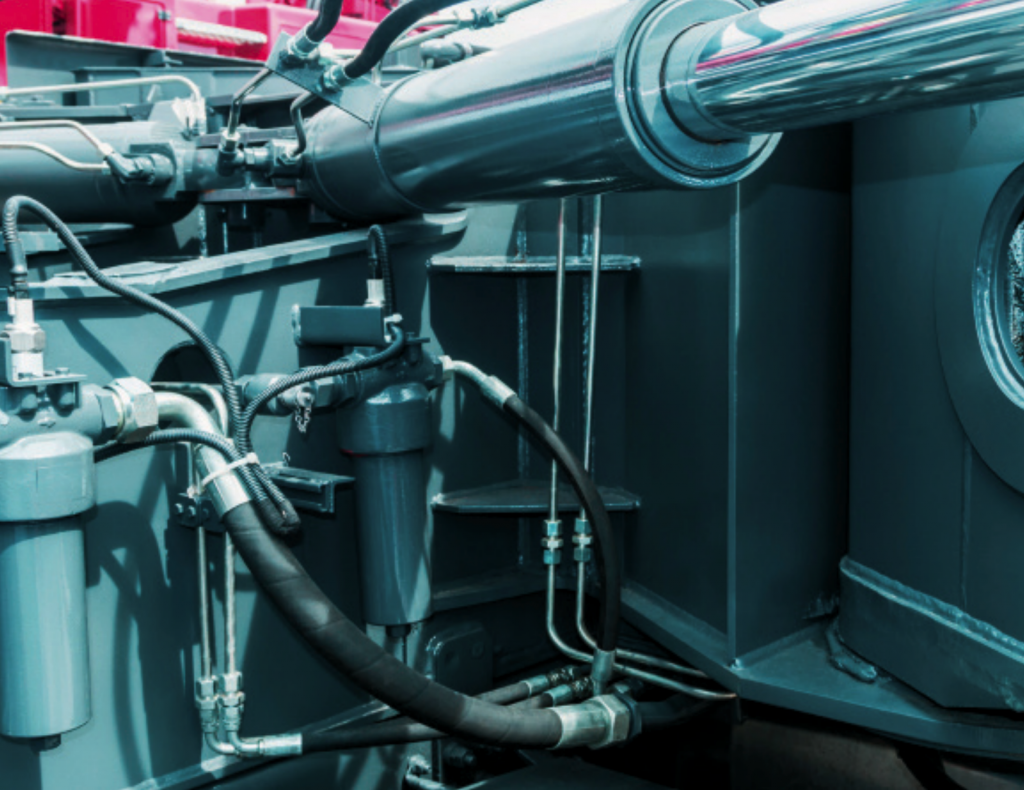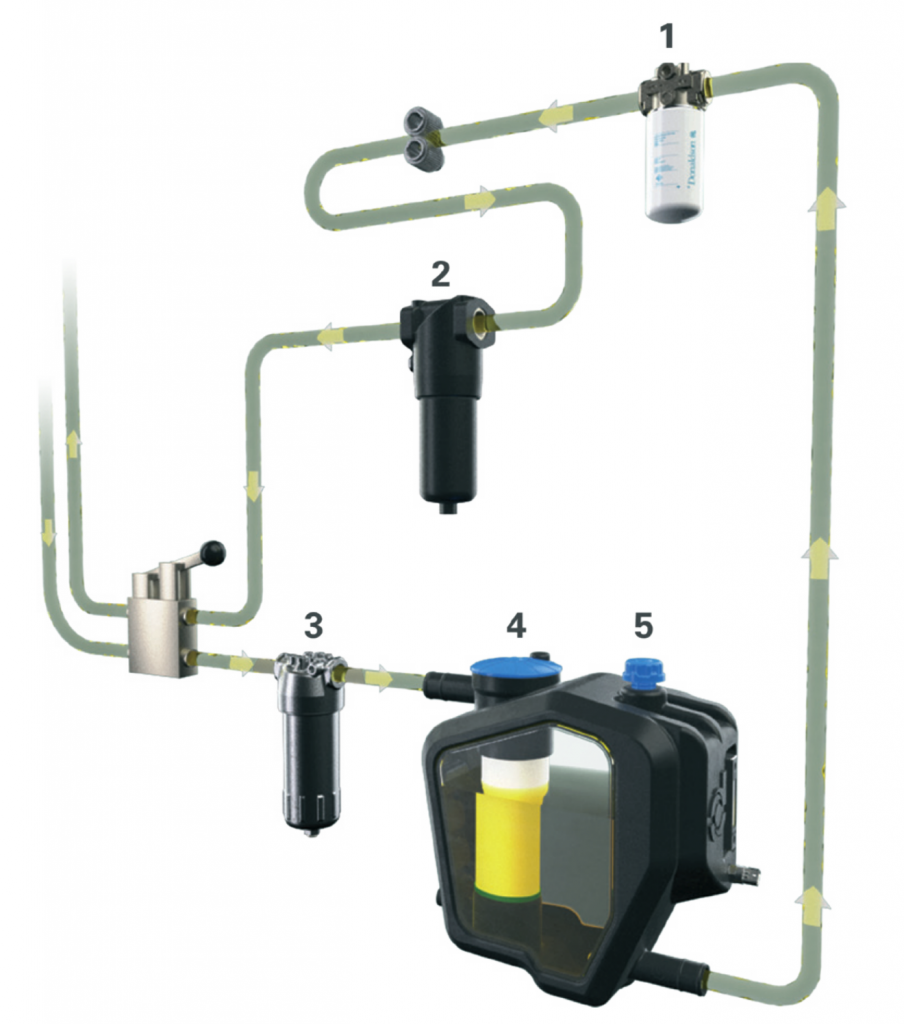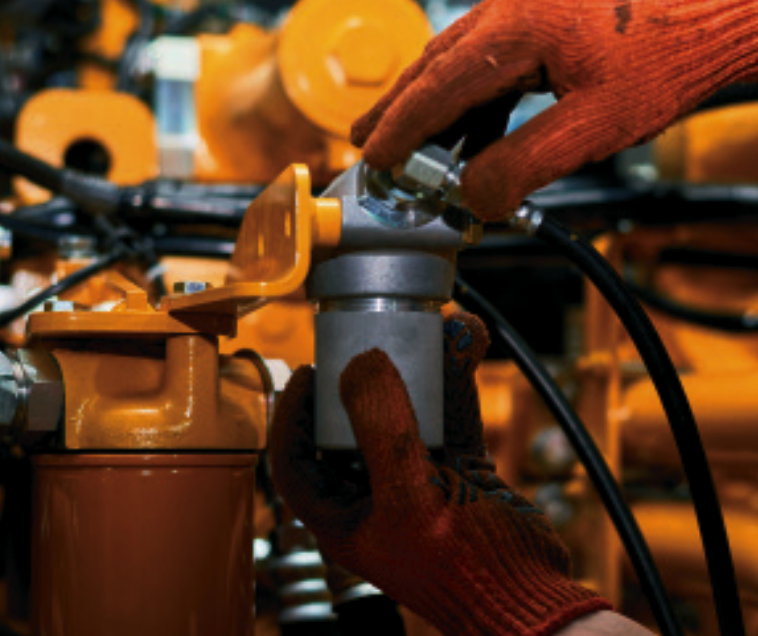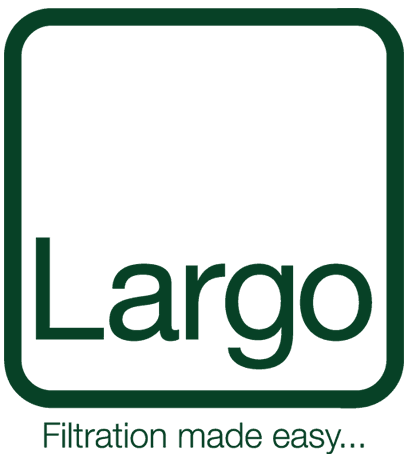WHAT YOU NEED TO KNOW…
Every hydraulic system powering agricultural and construction machinery includes a number of hydraulic filters, each specifically designed to remove contaminants and particles and protect the expensive equipment. While filters can be found at a number of positions along the hydraulic oil’s journey through the system, it’s rare to find machinery which uses every type of filter.
Each machinery manufacturer balances cost and physical constraints against the most efficient way to protect the system, and chooses which filters to include accordingly. When it’s time to replace the hydraulic filters, it’s important to know the differences and understand the importance of quality and filtration specifications.

What are the types of hydraulic filter?
The following are the most common filters featuring in hydraulic system circuits. Pressure and location in the system of each filter are important considerations.
- Low-pressure filters
- Medium-pressure filters
- High-pressure filters
- In-tank filters
- Breathers
Low pressure filters
These will be found in most hydraulic systems, generally in-line on the return journey to the hydraulic tank and from
the tank towards the pump
Low-pressure hydraulic filters are typically rated for pressures of up to 20 bar / 350 psi.
Medium pressure filters
Medium-pressure filters are usually designed as in-line components, either as a spin-on or as a cartridge bowl
solution.
They are usually rated for use at pressure levels of 20-135 bar / 90-2000 psi.
High pressure filters
These are usually placed between the pump and components like motors, cylinders and valves, for maximum protection.
They are typically rated for pressure levels upwards of 130 bar / 1885 psi and as high as 450 bar / 6527 psi.
In-tank filters
In-tank filters are low-pressure filters for the reservoir or tank; a space-saving design which positions the head on top of the tank, the cartridge inside, for return and suction line filtration.
Breathers
Breathers are filters designed to maintain clean airflow in and out of the tanks and reservoirs by preventing airborne particulate contamination and, in some cases, moisture contamination.

The critical importance of pressure and efficiency ratings
Any filter you consider has been designed to handle a certain level of pressure, depending on its location in the hydraulic circuit. A filter positioned between the tank and the pump, for instance, is low-pressure-rated, because no pressure is built up at that point, whereas a filter positioned directly after the pump will need a high-pressure rating.
Yet pressure isn’t the only consideration; filtration efficiency also matters.
The more efficient a filter is, the fewer particulates it allows through. However, high efficiency restricts flow, while low efficiency allows more contaminants through.
It would be easy to think that choosing a filter with a high efficiency will protect components, because fewer harmful particles make it through the filter. But most pressure filters and return filters have a bypass function. This means that if the filter becomes too clogged or the filter over-performing
due to high efficiency level for the application on which it is used, and slows the flow, a valve opens up within the filter to allow unfiltered oil through – to protect the system and its expensive components from damage through insufficient oil flow and damage through pressure build up.
As you can clearly see, it’s a delicate balance between effective filtration and
choking the system through over-efficiency. It’s essential that any replacement filters are chosen according to both efficiency and pressure values recommended by the machine’s manufacturer.
And because different filters feature their bypass either in the element or the head, you must also replace like-for-like in design structure: if the worn filter has its bypass in the head, your replacement filter must also have its bypass in the head, for instance.

Tips for trouble-free filter replacement
- Follow your equipment manufacturer’s recommendations for frequency of system maintenance and replacing hydraulic filters. This is usually expressed in terms of working hours.
- Check your equipment manufacturer’s manual for recommendations for each filter’s pressure and efficiency value – and stick to them.
- Don’t just choose the cheapest filter available – filters from reputable manufacturers undergo stringent testing for performance and longevity. A well-made and effective filter will protect the more valuable components on your machinery for far longer and without a risk for unexpected downtime.
- If in doubt, contact your Donaldson experts for guidance.


